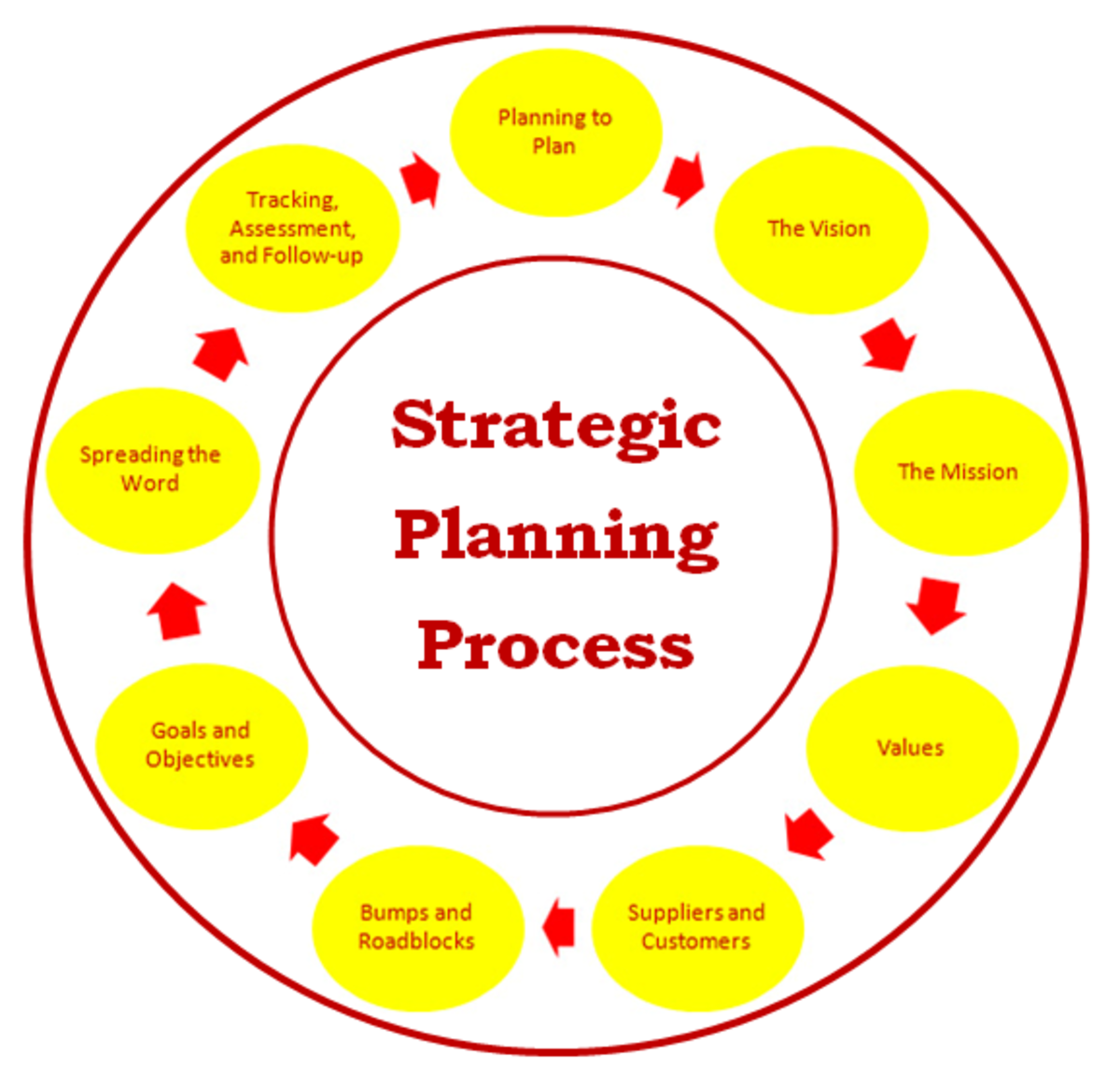Ah, strategic plans. The blueprints to success, the roadmaps to greatness, the… okay, okay, we'll stop with the cheesy phrases. But seriously, strategic plans are important. They help organizations define their goals, objectives, and priorities. So, what are the key elements of a strategic plan? Let's take a look at a couple of examples.
Organizational Strategic Plan

First up, we have an example of an organizational strategic plan from hubpages. Impressive title, right? Well, the contents are just as impressive. This plan is broken down into seven key elements:
- Vision statement
- Mission statement
- Core values
- SWOT analysis
- Goals and objectives
- Action plan
- Monitoring and evaluation
Let's break down each element one by one, shall we?
Vision statement
Every organization needs a vision. It's basically a statement that describes what the organization hopes to achieve in the future. It's kind of like a destination on a road trip. You know where you want to end up, but you need to figure out how to get there.
Mission statement
A mission statement is kind of like a map. It outlines the purpose of the organization and what it does. It's essentially the "why" behind what an organization does.
Core values
Think of core values as the guiding principles for an organization. They help define the culture and provide a sense of direction. They can also help with decision-making and prioritizing.
SWOT analysis
A SWOT analysis is a fancy term for looking at an organization's strengths, weaknesses, opportunities, and threats. This can help identify areas where the organization excels (strengths) and areas where it needs to improve (weaknesses). It can also help identify potential opportunities and threats in the industry or market.
Goals and objectives
Goals and objectives are the specific targets an organization wants to achieve. They should be measurable, time-bound, and aligned with the vision and mission statements. Think of them as the individual stops on the road trip to the organization's destination.
Action plan
An action plan outlines the steps an organization will take to achieve its goals and objectives. It should include specific tasks, timelines, and responsibilities assigned to individuals or teams. It's essentially the roadmap to success.
Monitoring and evaluation
This is the final element in the organizational strategic plan. Once the plan is put into action, it's important to monitor progress and evaluate effectiveness. This can help identify areas that need improvement and adjust the plan accordingly.
The Art Center Strategic Plan

Next up, we have an example of a strategic plan from The Art Center. It's a bit more visual than the previous example, but it still includes all the key elements we just discussed. Let's take a closer look.
Vision statement
The Art Center's vision is "to be an inclusive, creative community hub that inspires and enriches lives through the power of the arts."
Mission statement
The Art Center's mission is "to create and promote exceptional visual and performing art experiences that enrich and nurture our community."
Core values
The Art Center has six core values: artistic integrity, inclusivity, collaboration, innovation, accessibility, and excellence. These values guide everything the organization does.
SWOT analysis
The Art Center's SWOT analysis identified opportunities to expand programming and partnerships, as well as threats from competition and economic volatility.
Goals and objectives
The Art Center's goals and objectives include increasing attendance, improving financial sustainability, and expanding outreach and partnerships.
Action plan
The Art Center's action plan includes specific tasks such as developing new partnerships, expanding programming, and increasing marketing efforts.
Monitoring and evaluation
The Art Center will monitor progress by tracking attendance and revenue data, as well as conducting surveys to gather feedback from the community.
So, there you have it. Two examples of strategic plans that include all the key elements necessary for success. Whether you're leading an organization or simply trying to achieve your own personal goals, remember that a strategic plan can help guide you to success. Happy planning!
If you are searching about Five Anchors of a Nonprofit Strategic Plan • Facilitation & Process you've came to the right place. We have 7 Pics about Five Anchors of a Nonprofit Strategic Plan • Facilitation & Process like 5 Strategic Planning steps overview - dotBPM - Business Process Management, Strategic Plan - American Art Therapy Association and also Organizational Strategic Plan- Elements and Examples | hubpages. Read more:
Five Anchors Of A Nonprofit Strategic Plan • Facilitation & Process
anchors approach facilitation
Strategic Plan - American Art Therapy Association
pillars arttherapy
Strategic Plan (2009-2011) By Americans For The Arts - Issuu
Strategic Planning In The Arts: A Practical Guide, Kaiser
Strategic Plan | The Art Center
strategic plan center poster century
5 Strategic Planning Steps Overview - DotBPM - Business Process Management
Organizational Strategic Plan- Elements And Examples | Hubpages
strategic planning plan strategy business process organizational examples elements management plans organization nonprofit marketing sample model cliparts template clipart chart
Anchors approach facilitation. Strategic plan. Strategic plan (2009-2011) by americans for the arts




Post a Comment for "Arts Organization Strategic Plan Five anchors of a nonprofit strategic plan • facilitation & process"